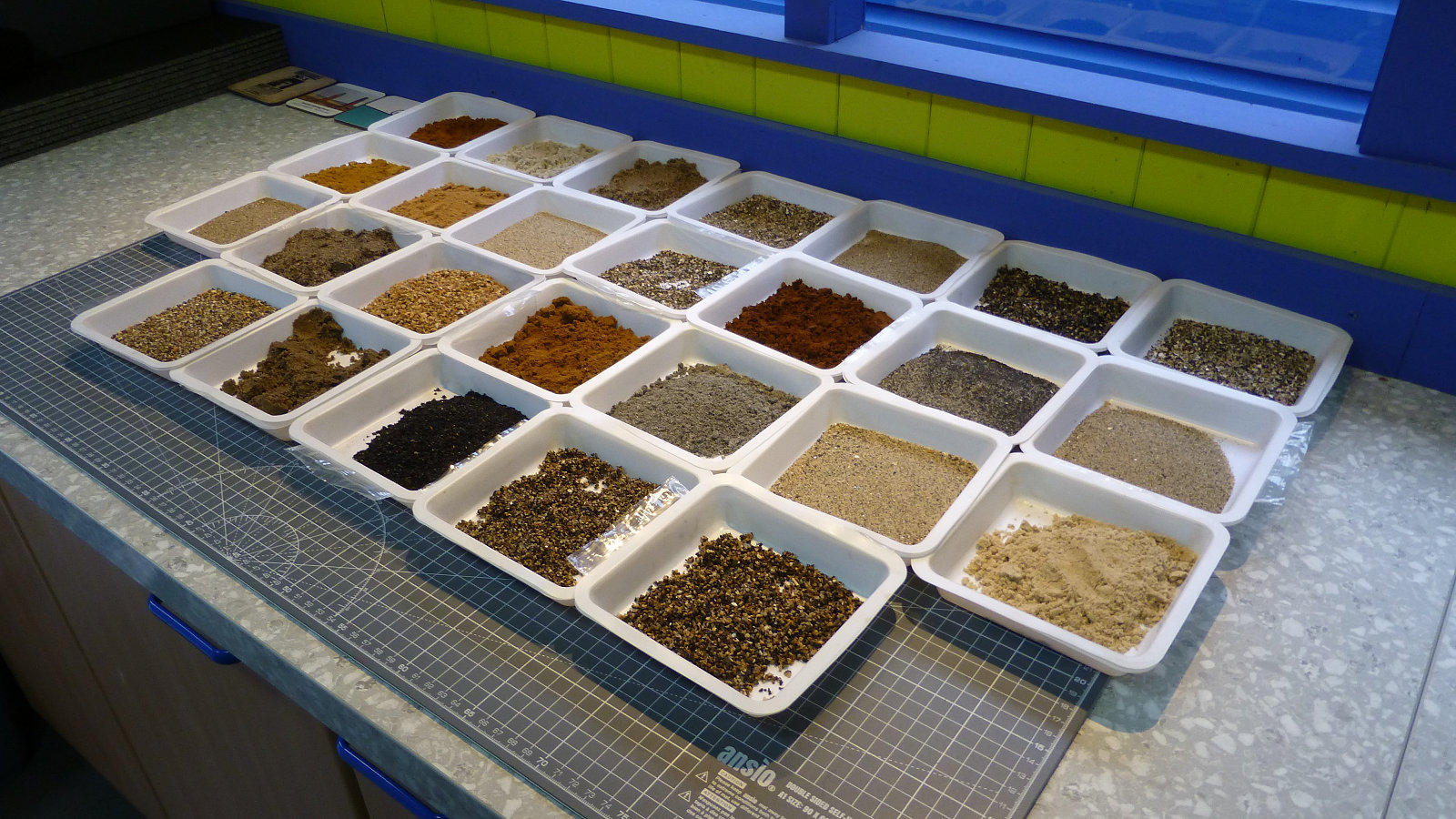Here in the British Isles the weather can be rather fickle, particularly when out sand collecting, or so it seems. As a result samples always seem to be wet, or damp at the very least, and most will need to be dried before storage. Only sand collected from the top of the dunes ever seems to be dry.
Drying samples of sand is not rocket science but the time it takes to dry does depend on climate and where you are actually placing the samples out to dry. During the winter months, here in Scotland, I need to take my samples indoors to dry. Leaving them in the shed to dry would take weeks at this time of year and drying them outside is just not an option.
My personal method is to spread the samples in flat bottomed plastic trays called “weigh boats” – thin flexible plastic trays used to weigh out chemicals in research laboratories. They are used only once before being discarded. You can buy them quite cheaply in batches of 250 for around £25.00. In winter these are placed in top of the kitchen wall units the warmest area on the house. They come in a range of sizes and I’ve found that 140 x 140 mm are optimal for the size of samples I collect. There are even smaller sizes if you go for micro-sampling. As they stack together neatly, they take up little space, and having a uniform set of drying trays is much better than an assortment of odds and ends that you find lying about.
It takes about a day or two for a really wet sample to dry, with only a few hours for sand that is merely damp. I used to make use of the tops of radiators but this is not a preferred method as the trays are too easy to dislodge and it’s next to impossible to recovery mixed-up samples. Not the best thing you want to happen to your sand samples. A great tip is to use two trays together with your labelled sampling bag safely held between the two trays. This keeps the sampling bag and sample together and prevent things getting mixed up.
During the warmer summer months, I use the garden shed and greenhouse( if there’s space!) to dry wet samples. Again spreading the sand on flat trays to increase the surface area will assist drying. The greenhouse by far gets them dried the quickest but with samples of very fine sand, and particularly clay, it’s important to protect them from the wind which could blow away fine particles.
A small point to note is that the sampling bag you used to collect your sample may also be wet and it’s not a good idea to return dry sand to a wet bag. As a rule I always discard any bag that was wet. They only cost a few pence each and binning a few bags won’t break the bank.
Of course, indoor drying is not without it’s problems. Some samples may contain organic materials, such as plant matter or even insects, and the odours given off while drying can be quite noticeable and can upset less enthusiastic family members. Such samples are best dried elsewhere.
For those who do not have a suitable drying area for their samples, a cheap option is to purchase a plastic mini-greenhouse. These are constructed using a tubular steel frame which supports a strong plastic cover. A roll-up zipped door allows access. You can pick these up for about £30.00 complete with three shelves. A great way to dry samples when your wife has the greenhouse full of plants.
Copyright ©2020 Gary Buckham. All rights reserved.


